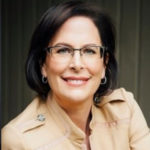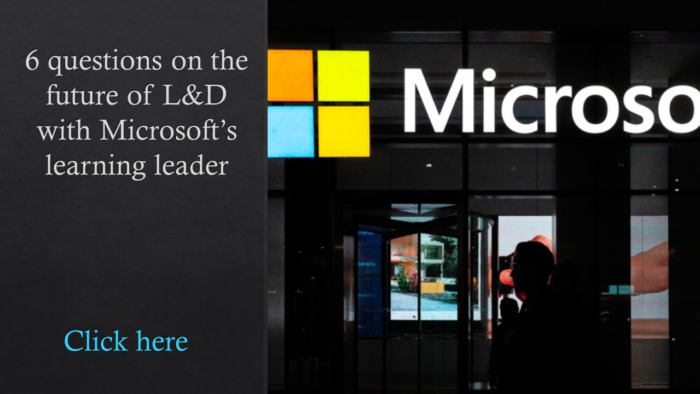Kathleen Hogan, Microsoft’s executive vice president for human resources and chief people officer, was one of three new fellows installed into the National Academy of Human Resources this month during the academy’s annual dinner in New York City. She also was the Human Resource Executive® HR Executive of the Year in 2021.
Hogan, along with NextEra Energy CHRO Deborah Caplan and The Home Depot CHRO Timothy Hourigan, recently answered questions from HRE on HR and its future.
HRE: How has your own view of the HR function changed since the pandemic started?

Hogan: I’ve always believed HR is central to a company’s mission, especially at Microsoft. That said, the pandemic has elevated the importance of the HR function more broadly, as culture has become a top priority for companies across all industries. HR is now considered a strategic arm of a company and responsible for creating resilient organizations. Companies are seeing the benefits of putting people first and how that focus is helping to successfully scale a business. HR is central to helping move the business forward by creating a workplace culture that enables flexibility, actively listens, provides robust benefits and holistic wellbeing, and supports learning and career growth opportunities.
HRE: What are the skills that will make HR leaders most successful in today’s quickly changing, uncertain world of work?
Hogan: I believe the skills that will make HR leaders most successful today and tomorrow are having a growth mindset, practicing empathy and being proactive. A growth mindset is fundamental to being open and adaptable to change and being a learn-it-all. We can all learn something from every experience we have and take that forward, so we continuously improve and grow. Practicing empathy is key to creating an inclusive environment. Listening to different perspectives and seeking to understand is incredibly important, as employees want to feel seen and heard. Being proactive—being able to zoom out and knowing how and when to take initiative—is critical, especially in our fast-paced, rapidly changing world of work. It’s also about ensuring, as you execute and run the many things required to keep the business going, you’re also able to lean into open space and identify and create new programs or initiatives required for the future.
HRE: What area of HR holds the most promise to be positively impacted by the use of emerging technologies in the next few years?
Hogan: The shift to remote work accelerated the adoption of video meetings beyond anything we could have imagined. This shift had a dramatic influence on our innovation roadmap and caused us to rethink and reprioritize. We asked ourselves: What do people need to do their jobs in this new world? Virtual meetings will remain a fixture in the hybrid workplace. Meeting experiences and physical meeting space must be reimagined to enable equitable meeting experiences for people no matter where they’re joining from—remote or on-site. Features like Microsoft Teams’ Together mode can help make people feel more connected and reduce meeting fatigue.
The challenge ahead will be balancing the benefits of flexible work with burnout. But tech can help employees get their time back and have more impact, with five-minute meeting delays, brain research, Headspace, virtual commute, employee experience platforms like Viva and more.
HRE: In your experience, what have been the biggest opportunities to enhance diversity and inclusion across Microsoft?
Hogan: With Microsoft’s growth, we are finding it more important than ever to ensure we’re providing employees with the career development they are looking for, in addition to internal talent management processes that help them explore and grow throughout Microsoft. For example, we’ve invested in the 20,000-plus managers at Microsoft who are supported to truly model, coach and care, and in then holding all leadership accountable for really knowing Microsoft talent—not just the senior leaders but all employees. By deepening our connections, we can continue to attract world-class talent, be disciplined in retention, and advance and grow representation at all levels at Microsoft.
HRE: How do you try to embody Microsoft’s “growth mindset” in your daily work?
Hogan: Practicing a growth mindset is a daily act to challenge my fixed mindset when faced with adversity or a challenge. Societal norms have certainly promoted this perspective of failure, which starts early with school report cards and transitions into the workplace where performance reviews, peer evaluation and manager approval are all on the line. When I begin to sense the fear of failure creeping in, I know I need to zoom out and ask myself, “What is the worst that can happen?”
 For example, within my first few weeks as the chief people officer at Microsoft, I had to share a significant problem with my new boss. I started the conversation with an apology and asserting that we needed to change the course. Microsoft CEO Satya Nadella asked, “Do you think this new course is the right one?” And when I said yes, he said, “Great. Don’t apologize. You’ve learned and pivoted, so move on.”
For example, within my first few weeks as the chief people officer at Microsoft, I had to share a significant problem with my new boss. I started the conversation with an apology and asserting that we needed to change the course. Microsoft CEO Satya Nadella asked, “Do you think this new course is the right one?” And when I said yes, he said, “Great. Don’t apologize. You’ve learned and pivoted, so move on.”
This allowed me to take a learning-first approach that was liberating to the team. Instead of shutting them down and driving self-preservation, their minds were unlocked, and they were inspired to innovate and find a better solution. That experience reassured me that yes, we may fail, but if we learn from our failures, we’ve succeeded in moving closer to our goals and mastering challenges. It also reminded me that asking the right questions in these moments can make or break team spirit and performance. Today, I reflect on those past failures—how they have offered learning, growth and perspective shifts—and I use those memories as fuel to be brave.

